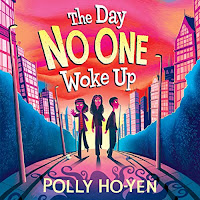On Sunday, 23 July 1963, BBC staff director Waris Hussein met for the first time with Verity Lambert, the newly appointed producer of a series to be called
Doctor Who. “So far we have one writer and no scripts,”
Hussein wrote in his diary. “I put forward Marghanita Laski’s name as a possible.”
“I’ve no idea now why I suggested her," Hussein said earlier this year. Laski was best known at the time as a critic and panelist on TV shows such as What's My Line? But she was also a novelist and of her various novels my bet is that, 60 years ago, Hussein had in mind her odd, 100-page The Victorian Chaise-Longue (1953). He might even have had in mind the TV version: adapted and directed by James MacTaggart, it was screened on BBC Television on 19 March 1962.
The story is told from the perspective of Melanie or Melly Langdon (who has the same initials as Laski), a young woman who has recently given birth to a healthy son but is herself ill with TB. In an attempt to aid her recovery by exposing her to more sunlight, she's allowed out of the confinement of one room in her Islington home and can spend afternoons in the drawing room. There, she lies propped up on an old chaise-longue.
We cut back to her visit to an antique shop (also called a junk shop), seeking a cradle for the then forthcoming baby. There's some fun stuff as she projects an air of idle fancy rather than of being after something specific, to prevent the staff trying to foist something on her for an unreasonable price. This done, she then forms a bond with the young man serving her and they locate the shop's sole cradle - a "hopelessly unfashionable" Jacobean model in dark-carved oak.
“‘I can't say I fancy it myself,’ admitted the young man. ‘It will probably go to America. There's quite a demand for them there, for keeping logs in, you know.’
‘My cradle will have a baby in it,’ said Melanie proudly, and they enjoyed a moment of sympathetic superiority, the poor yet well-adjusted English who hadn't lost sight of true purposes.” (p. 18)
In short, she's a demonstrably intelligent, driven young woman with agency and attitude. When she then spots an old chaise-longue that takes her fancy, she buys it on the spot.
We return to the present - but briefly because soon after the recuperating Melanie/Melly is seated in this antique piece of furniture, she finds herself somewhere else amid people other than her husband. To begin with, Melanie thinks she's been kidnapped but we come to realise that she's been transported back in time 90 years to 22 April 1864 (p. 37), and into the body of another young woman, Milly, who is trapped on the same chaise-tongue while also suffering from TB. At times, Melanie can access Milly's thoughts and memories, and is even swamped by them. She struggles to make her predicament understood and to find a means of escape. As she fails to escape or get through to those around her, she uncovers Milly's awful story.
One issue is that Melanie's knowledge of the 1860s is imperfect and she can't think what to say to convince anyone. Then, when she settles on an idea, there is a further obstacle:
“If I speak of Cardinal Newman and he's happened already, it proves nothing at all. If I could say that the Government will fall and the Prince Consort will die, there's no proof it's going to happen. Discoveries and inventions, she thought then, that's what I'll talk about, that must prove it to him. We have aeroplanes, she said tentatively in her mind, and then she tried to repeat the phrase soundlessly with her mouth, but the exact words would not come. What did I say, she asked herself when the effort had been made, something about machines that fly or was it aeronautic machines? Wireless, she screamed in her mind, television, penicillin, gramophone-records and vacuum-cleaners, but none of these words could be framed by her lips.” (p. 58)
In short, some powerful force prevents her from saying anything aloud that Milly would not understand, which effectively prevents her from altering future history. This is similar to the strictures in the early background notes on Doctor Who revised in July 1963 - soon after Waris Hussein recommended this book - about not being able to change or affect established events.
However, I think I've identified another source for the conception of the mechanics of time travel seen in early Doctor Who, which I get into in my imminent book, David Whitaker in an Exciting Adventure with Television (plus details of when Whitaker worked on something with Laski). Instead, I think Hussein was probably thinking of the tone and feel of this short story. The website of Persephone Books, which published the edition of Laski's novel I read, comes with an endorsement by novelist Penelope Lively:
“Disturbing and compulsive ... This is time travel fiction, but with a difference… instead of making it into a form of adventure, what Marghanita Laski has done is to propose that such an experience would be the ultimate terror…”
The first broadcast episodes of Doctor Who are scary, the events an ordeal for the crew. So I wonder if that's what Hussein brought to the series, via Laski...
Oh, and one last excellent fact about Laski, from the introduction by PD James to my edition of the novel:
“In one of her obituaries, Laurence Marks described how she gave evidence in the 1960s for the defence in the prosecution of the publisher of John Cleland's bawdy comic novel, Fanny Hill. Miss Laski told the court that this book was important because it illustrated the first use in English Literature of certain unusual words. The judge asked for an example, to which Miss Laski replied 'chaise-longue'.” (pp. viii-ix)
See also: me on The Inheritors by William Golding (1955) and its influence on the first Doctor Who story




























